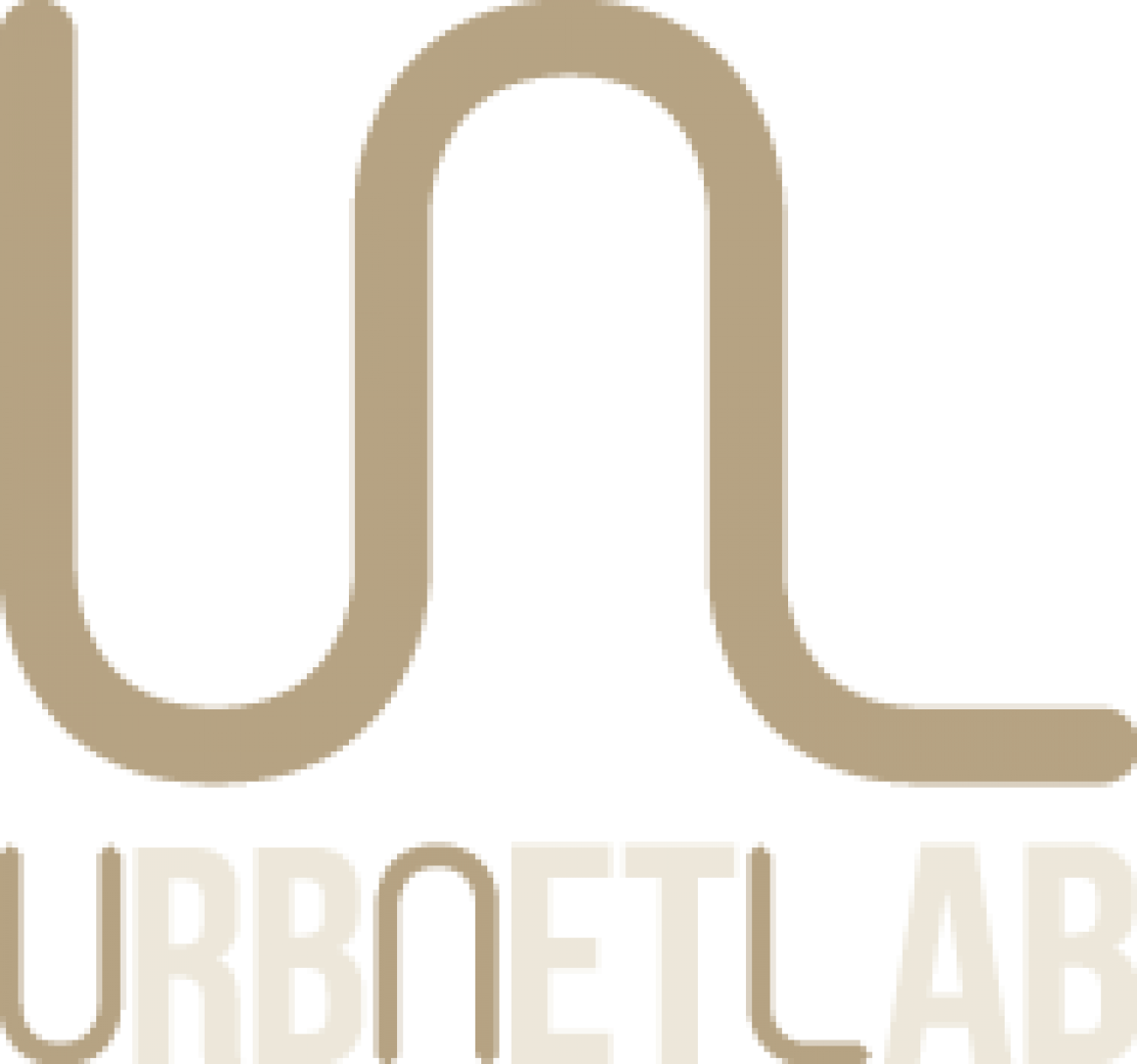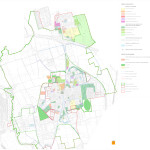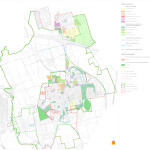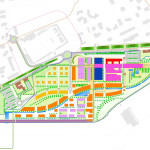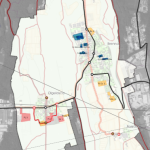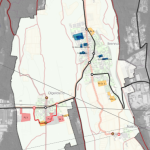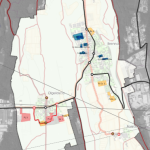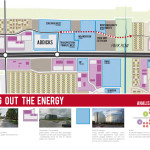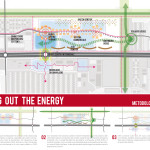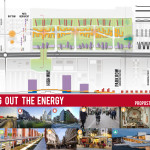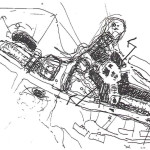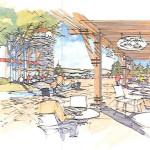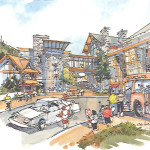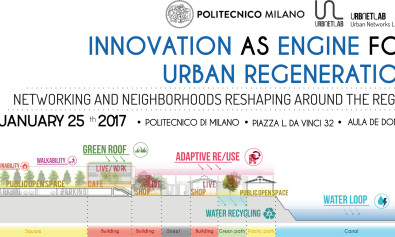Municipality of Opera (MI) – Assessment and public assets management
Status of works: the articulation of the agreement has already defined the initial analytical framework for the amount of the public assets (both in terms of standard built up areas or prevision, to be implemented in planning tools), and has proposed a methodology for the strategic management of setbacks for the implementation of urban previsions capable of devaluing available resources. A first intervention has already been identified; it concerns the configuration of the learning complex of an elementary school in a compensation mechanism of equalization with the transformation of a standard area through a public call for alienation.
The next steps involve monitoring the project implementation process and the drafting of management procedures for other similar situations, to create a new methodology for the management of public assets and to increase usability and quality without burdening the municipal budget. We will study the direct link between consistency and value of public assets, and the plan’s previsioning system for the plan.
Outcomes and learnings: the agreement allows to consolidate the strategic management of the public assets, whether existing or in a project, and to closely relate it to the private transformations and the evolving municipal needs within an area. It allows to actively connect all the transformative processes (generally dynamic) to the heritage management culture (traditionally slower and more complex). The method’s effectiveness will be evaluated at the conclusion of the agreement, through the application of other similar cases to evaluate the transferability to other scenarios.
Attualmente è impegnato:
con il Comune di Opera (Mi), per assistere il processo attuativo di un’area di trasformazione pubblica, sottratta al patrimonio delle aree pubbliche per volontà dell’amministrazione e destinata ad ospitare un centro servizi privato di uso pubblico. UrbNetLab si sta occupando di consigliare nella costruzione del bando di alienazione dell’area, nella definizione del master plan per le previsioni di trasformazione fisica , nella valutazione del patrimonio di aree a standard del comune e nella costruzione di uno scenario di potenziamento e miglior gestione delle aree pubbliche e dei beni del patrimonio pubblico;
- Consulting for Opera
- DELIVERY June 2016
Alauda Srl Company – Feasibility study for drafting a masterplan for the renovation of the Linificio Canapificio Nazionale
Status of works: the difficult intervention on the area of the former linen factory (Linificio) starts with drafting the renovation project.
The research activity triggered a dialog between the municipality of Cassano d’Adda, private stakeholders and local regional institutions (such as Parco Adda Nord) who together defined a common agenda and work toward implementing the goal. Through building consensus, the board is working towards sharing the works and the public benefit of the project, by modifying the economic framework and the project itself. At the same time, the consultancy is allowing us to frame positive tensions within a wider scale and transfer them to the project in the guise of opportunities for links and connections on an environmental and financial nature, according to the role that the area may play within the wider area. Specifically, in relation to the altered landscape following the development and commissioning of new infrastructures (such as Bre Be Mi and Tangenziale Est Esterna). The plan for the general framework was submitted in December 2015; the term of the agreement ends with the approval of the Renovation Plan by May 2016.
Outcomes and learnings: The agreement has helped identify the methodology through which it’s possible to establish a supervisory board comprised of different authorities and private operators with different design objectives and culture. Above all, we’re testing a methodology to understand what enforcement mechanisms can be put in place to ensure the implementation of a transformation project of great importance, with significant costs, in an area with great market uncertainty. We are testing a method of implementation by increments in stages, and with varying content and flexibility; depending on the results of both the implementation and the market success obtained by the previous phase. This requires a specific conventional mechanism and a flexible work approach within the rigid, alas still old-fashioned parameters of the municipal PGT.
The proposal for the implementation of a renovation plan has been submitted and will be adopted by April 2016. Final approval is supposed to come at the end of May 2016. The work UrbNetLab performed has opened a close, difficult and slow process that lasted since 9 years of unsuccessful attempts to get the renovation approved, and for the first time it highlighted the correct implementation process to the privat developers, to the municipality and to the arena of citizens and interests waivers.
con la società Alauda Srl, proprietaria dell’area del Linificio a Cassano d’Adda (Mi), un’area di rara bellezza e interesse ambientale e insediativo, ai margini del borgo storico del Comune di Cassano d’Adda, e lambita dal sistema dei canali artificali dell’Adda. Da anni dismessa, è stata al centro della peggior gestione attuativa immaginabile da alcune precedenti amministrazioni; è ora inserita in un percorso attuativo corretto, in un dialogo continuo tra privati, amministrazione ed altri enti (quali il Parco Adda Nord). L’attività di UrbNetLab si distingue nell’aiutare a comprendere il sistema delle funzioni, degli occupatori e degli usi finali per l’area, nel coadiuvare il processo di costruzione della convenzione e dei relativi obblighi e di governare il confronto tra aspettative dell’amministrazione e limiti operativi del privato attraverso un quadro economico preciso e attento alle molteplici variabili in gioco
- Masterplan
Municipality of Figino Serenza (CO) – Furia Cuscini Company
Agreement for an urban reconfiguration of the town including public roads and spaces. First instalment: analysis and definition of the projects
Status of works: The Agreement considers the implementation of a series of micro transformations within the fabric of the municipal territorial layout, and which modify the plan for the roads and for the mobility. Specifically, and also thanks to the council taking on board the initiative “Lavorando con quello che c’è”, it considers how the micro changes in a productive area of the town may be expressed in the layout of the roads and in the way traffic and mobility are handled by the municipality, following a substantial, even if local, boom in the economic and industrial sectors.
Outcomes and learnings: the final report for the development of the Agreement was produced. The status of the ongoing transformations and their impact on traffic and mobility have been analyzed. A public works management model for greater efficiency is being proposed with the involvement of the private sector, effectively realigning the Public Works’ three-year plan to the actual transformation taking place in the area. A second agreement is expected to be stipulated soon.
Sta stringendo relazioni con:
I Comuni di Novedrate e Figino Serenza (Co) per la costruzione di quadri attuativi e percorsi di trasformazione di previsioni già in essere e nuove previsioni capaci di aumentare sensibilmente il patrimonio di uso pubblico e il sistema delle aree verdi, in un contesto di particolare interesse per le dinamiche insediative
- Industrial Sites Mobility-Report
Municipality of Novate Milanese (MI) – Agreement for a framework on research
Status of works: an agreement for a framework was stipulated with the municipality of Novate Milanese in order to commence a collaboration on research and consultancy pertaining to the significant territorial dynamics taking place in the town. In relation to the PGT’s previsions, the council is affected by many potential transformations in central areas of strategic importance (such as the town hall, public properties and vacant private lots). Most of all, the transformation of public areas in close proximity to the strategic areas of the metropolitan region of MIlano (with the opening of the Rho-Monza to facilitate access to Expo), and specifically, public areas undergoing transformation close to the strategic areas of Milanese hinterland (close to Expo and Bovisa). The agreement for a framework will develop specific conventions for research on each of these issues; the first is already being considered for the implementation of a major transformation related to the establishment of a residential campus for university students in an area close to the City of Milan. To this end, UrbNetLab has united the study of this subject with the participation of Call Bovisa 2016 (see below) by addressing the issue of student housing in Milan.
Comune di Novate Milanese (MI). Convenzione quadro di ricerca
E’ stata stipulata una convenzione quadro con il Comune di Novate Milanese per l’avvio di collaborazione di ricerca e di consulenza in relazione alle importanti dinamiche territoriali in corso nel Comune. In relazione alle previsioni del PGT in essere, il Comune è interessato da numerose trasformazioni potenziali, relative ad alcuni ambiti centrali di strategica importanza (tra sede comunale, proprietà pubbliche, ambiti privati dismessi), ambiti commerciali strettamente serviti dalle nuove infrastrutture (con l’apertura della Rho – Monza a supporto dell’accessibilità alle aree Expo) e soprattutto ambiti di trasformazione di proprietà pubblica in prossimità di aree strategiche della regione urbana milanese (per vicinanza a Expo e Bovisa). La convenzione quadro produrrà convenzioni specifiche di ricerca su ciascuno di questi temi, e la prima è già in discussione per l’attuazione di una grande trasformazione relative all’insediamento di un campus residenziale per studenti universitari in un’area a ridosso del Comune di Milano. Per questo, UrbNetLab ha unito lo studio per questo tema con la partecipazione alla Call Bovisa 2016 (vedi di seguito) affrontando il tema dell’insediamento per studenti a Milano.
Municipality of Brenna (Co) – Agreement for a preliminary feasibility study for a long term strategic plan for the district government
The agreement concerns the strategy for identifying and enhancing the quality and frequency of public spaces, services, places to gather and socialize within the district and the contiguous municipalities. It will develop a management strategy to increase the quality of the private spaces; define scenarios for optimum road management, and generally promote mobility, reassess the town’s power consumption in view of the opportunity for building an energy annex to the building regulation. As a matter of fact, it serves as a template for consulting with councils on the strategic management for town planning.
Outcomes and learnings: the agreement was measured against the poor knowledge of the of planning techniques used in this context, specifically, with the need to connect to waster networks and bigger-picture contexts. The purpose of the work of UrbNetLab, and of Dastu in general, is the dissemination of the language of planning even in smaller contexts, thus highlighting the advantages of making every day services available online for the management the community, as well as sharing sophisticated planning tools (e.g. Comunità Montana), all of which are aspects of planning that otherwise, due to the size of the country, may not gain exposure. The Agreement is in its initial stage.
Comune di Brenna (Co). Convenzione per la definizione di “Scenari di fattibilità/preliminare inerente la pianificazione strategica a lungo termine sull’assetto e sul governo del territorio”: prima tranche € 15.000
La convenzione di occupa di definire scenari e strategie per l’aumento della qualità dello spazio pubblico, dei servizi, degli spazi per la collettività e della socialità nel territorio del Comune e nei territori di relazione con i comuni contermini. Si occuperà di costruire modalità di gestione per l’aumento della qualità degli spazi privati; definire scenari di miglior gestione della viabilità e in generale della mobilità delle persone e delle cose; rivalutare lo stato energetico del Comune, in relazione alla possibilità di costruire l’Allegato energetico al Regolamento Edilizio. Di fatto si configura come convenzione quadro per lo svolgimento di consulenze a supporto di attività strategiche per la migliore gestione delle previsioni del Comune.
Risultati e insegnamenti: la convenzione si è misurata con la scarsa conoscenza delle tecniche di pianificazione del contesto, e soprattutto con la necessità di rapportarsi a reti e contesti di maggior dimensione. Lo scopo del lavoro di UrbNetLab e in generale del Dastu è di abituare ad un linguaggio della pianificazione di maggior spessore, anche per piccoli contesti, dimostrando l’utilità del mettere in rete servizi quotidiani di gestione della comunità e di condividere con sistemi di pianificazione di più alto rango (come ad esempio almeno la Comunità Montana) temi della pianificazione che altrimenti, per dimensione del paese, non possono avere respire. La convenzione è appena avviata.
- 1) FIRST DELIVERIES July 2016
- 2) SECOND DELIVERIES July 2016
- 3) THIRD DELIVERIES Sept, 14th 2016
Abroad, it has engaged in relations with:
Toward an integrated plan for the Energy Corridor – The Energy Corridor Management District, Houston, TX, USA – Resp. Clark Martinsons – AICP, AIA – 2014, in progress –
The research, started in 2014, aims at establishing a collaboration with the Energy Corridor Management District, a particular institution allowed by the local laws and designated to the control of physical effects of the transformations expected along highway 10 – within the urban region of Houston, TX (USA) – with the increase of the concentration of all the big companies for the exploitation of the energy deposits located in the Houston area. I was called by the Board of Directors and by Clark Martinson, head of the Energy Corridor Management District, to understand how to build a Strategic Plan able to coordinate the development of the corridor and the several master plans that the private companies are achieving. The challenge is to create a tool sufficiently “soft” in an environment devoid of any planning, but at the same time “strong” to convince the private developers of the need to all merge into a single vision and single destination, able to develop the whole corridor into a new entity and urban center.
The results of this research have facilitated the development of the first Strategic Plan for the Energy Corridor, giving way to a new era of spatial planning for the institute; with improved coordination and a broader outlook; minute and detailed visions have been abandoned in favor of open collaborations with Houston’s hinterland. Specifically, during a key step, the publication of the first strategic plan on the hinterland.
The research was presented at:
(2016) Politecnico di Milano – DASTU – “Urbanising the region: densification of urban areas, retrofitting of suburbs. How local transformations are re shaping the urban regions throughout the US” – International Conference organized by Marco Facchinetti
The Energy Corridor District of Houston, Texas (USA), in undertaking a challenging effort to coordinate the newly built headquarters of the major oil companies, which are concentrated along the corridor of Interstate 10. It is challenging because it is a context that is culturally and operationally averse to planning and to the shared frameworks of planning, but which is highly stimulating because of the envisioned management of the Corridor and because of the structure of the Corridor, which runs between giant infrastructures, marked by a total absence of other means of access, the difficulty of navigating exceedingly rigid zoning laws, as well as the desire to open up ecological territories and networks, pedestrian and bicycle paths, and serving the various residential, commercial and service functions.
All’estero ha attivato rapporti con :
L’Energy Corridor District di Houston, Texas (USA) impegnato in un difficile tentativo di coordinamento tra le nuove realizzazioni degli headquarters delle principali compagnie petrolifere, concentrate attorno al corridoio della Interstate 10. Difficile, perché in un contesto culturalmente e operativamente avverso alla pianificazione e alla costruzione di quadri di condivisione delle previsioni ma altamente stimolante per la capacità di visione del management del Corridor e per la strutturazione del corridoio, tra gigantesche infrastrutture per la viabilità, la totale assenza di altri mezzi di comunicazione, la difficoltà di uscire da uno zoning rigidissimo e la volontà di aprire il territorio a reti ecologiche, percorsi pedonali e ciclabili, funzioni diverse quali la residenza, il commercio e i servizi
- Analysis
- Metodology
- Proposal
British Pacific Properties Limited, involved in designing a new urban center in a touristic village in British Columbia, Canada. UrbNetLab was called in to help in identifying the best and most proper urban plan, relative to the necessity of holding together the recreational tourist functions and at the same time addressing the needs of an urban village, in which there is a central space, constructed to take into account broader relations and connections, such as pedestrians areas, environmental areas, the function of pubic transport, and commercial areas.
British Pacific Properties Limited, impegnati a progettare un nuovo centro urbano per un villaggio turistico in British Columbia, Canada. UrbNetLab è stato contattato per identificare la forma urbana piu corretta in relazione alla necessità di tenere insieme le funzioni turistiche ricreative e la volontà di strutturare un villaggio urbano in cui la forma dello spazio sia centrale, e sia costruita da un sistema di relazioni e connessioni più ampio, quali quelle pedonali, ambientali, del trasporto pubblico, della rete commerciale
